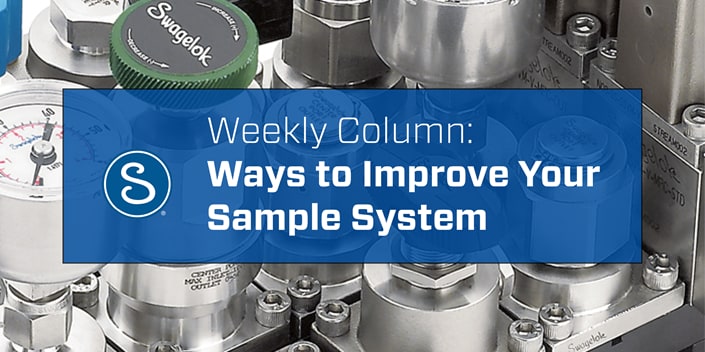Ways to Improve Your Sample System
The complexity of fluid systems and strict compliance requirements are increasing, and when your sample system is not fulfilling its intended purpose serious considerations needs to be taken. Ensuring you're within specification means an accurate analyzer reading, which gives operators confidence in the integrity of the sample. It comes down to delivering an uncontaminated sample compatible with the analyzer without any excessive time delay. Here's some guidelines to help increase the efficacy of your sampling systems:
- Consider the entirety of the system
- Follow best practices
- Proper training and learning opportunities
1. Consider the Entirety of the System
There's a common misconception that issues with analyzers are resultant from the area of the system where the issue originally occurred. The flow and the length of time to reach the analyzer without affecting the sample is the primary goal of any sampling system. The measured sample must flow through various lengths of tubing, vessels, and devices that ensure the sample is in suitable conditions for the analyzer. At any point along the way, a single error can affect the entire system, which can result in an inaccurate or unhelpful reading from the analyzer.
2. Following Best Practices
Issues can occur, and sometimes they can be more severe than we anticipate. Following best practices can help reduce unnecessary issues, and increase the health and longevity of your sampling system. Here are best practices to consider:
- Proper Tap Locations: Choose a location with high-flow where a well-blended sample can be analyzed
- Proper Probe Depth: Ideally, the probe should be long enough to reach the middle third of the process pipe
- Reducing Pressure at Field Stations: A regulator at the field station lowers the pressure of gases, which is not only safer for operators and technicians, but also reduces condensation and time delay, giving you a more representative sample
- Deadlegs: Any tee or cross is considered a deadleg, unless all its ports are flowing. Deadlegs in a direct line to the analyzer should be moved or removed.
3. Proper Training and Learning Opportunities
If your job is maintaining a sampling system, you may not have the time or resources to come up to speed on the system. Achieving the results you need depends on deepening your understanding of the system, as well as fine-tuning the system for optimum performance.
You can eliminate mistakes in your sampling system. And you don’t have to do it alone. Swagelok Training prepares analytical instrumentation technicians and maintenance personnel to catch mistakes before they happen and recognize existing problems in installed sampling systems.

